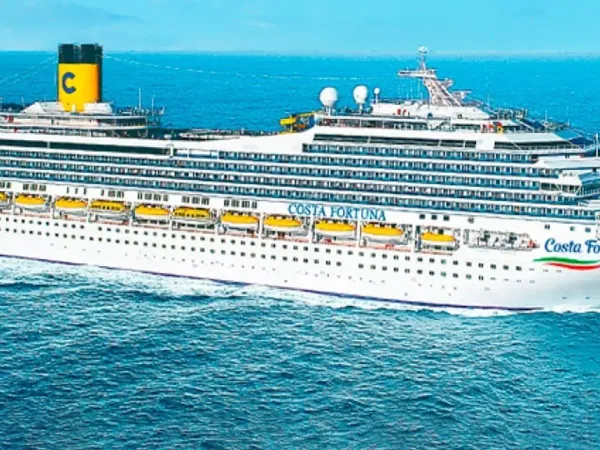Carnival cruise ship struck by ice; all safe, undamaged

The world of cruising has often presented opportunities for excitement and adventure, but recent events in Alaska have raised concerns about safety among vacationing travelers. A recent incident involving a Carnival Cruise ship made headlines when it struck drifting ice while navigating through the waters of Tracy Arm Fjord. Passengers on board compared the experience to a "modern Titanic moment," sparking discussions about safety measures and the challenges faced by cruise lines in icy waters.
Incident Overview: The Ice Strike
On September 6, 2024, the Carnival Cruise Line ship, known as Carnival Spirit, encountered an errant piece of drifting ice just outside of Sitka. Despite potential fears surrounding such an incident, the cruise line promptly assessed the impact and reported that the vessel remained undamaged.
Passenger Reactions: Social Media Buzz
Passengers on board shared their experiences through social media, adding to the dramatic narrative surrounding the event. One user, April Futrell, described the moment and posted pictures of the scene, emphasizing that all aboard were safe and the ship continued on its planned itinerary.
Carnival Cruise Line's Response
The company quickly issued statements to reassure passengers and the public that operations were unaffected. After evaluating the situation, Carnival confirmed that the ship’s journey would continue as scheduled towards its final destination in Seattle, underscoring the effectiveness of their safety protocols.
What is Tracy Arm Fjord?
Tracy Arm Fjord is famous for its stunning glaciers and majestic scenery, making it a popular cruise destination. However, the icy waters pose challenges for navigation, highlighting the need for comprehensive safety measures.
Global Perspectives on Cruise Safety
The event has triggered discussions about the safety regulations governing cruise ships traversing icy waters. Various maritime agencies emphasize the importance of adherence to safety protocols and ice surveillance to prevent accidents.
Potential Causes of Ice Incidents
The striking of ice by cruise vessels can often be attributed to several factors, including unpredictable weather changes and shifting glacial movements. Cruise lines have increasingly employed advanced technology to monitor real-time conditions in these areas.
Recent Developments in the Cruise Industry
As the cruise industry expands, so does the necessity for heightened safety measures. In light of incidents such as the one in Alaska, companies are focusing on improving navigational systems and ensuring crew members are well-trained to handle emergencies.
How Cruise Lines Manage Risks
Company policies now require ongoing training for crews, focusing on emergency preparedness for ice-related incidents. Additionally, regular vessel maintenance and technology updates are critical to offering safer travel experiences.
Comparing to Other Maritime Disasters
While the terms “cruise ship” and “iceberg” might evoke memories of the Titanic, modern ships are equipped with twice as many safety features. However, the stark reminder of past maritime disasters encourages continuous vigilance in the industry.
Future of Cruising in Alaskan Waters
Despite the risks posed by ice, the allure of Alaska remains strong for travelers. Cruise companies are actively seeking ways to balance passenger experiences with safety, ensuring that future adventures remain memorable for the right reasons.
FAQs about Cruise Safety and Alaska
- What should passengers do in case of an emergency on a cruise ship? Ensuring you are familiar with the ship’s safety drills and following crew instructions is vital in any emergency, including ice encounters.
- How does ice impact cruise itineraries? Cruise lines actively monitor ice conditions and may adjust routes if necessary to prioritize passenger safety.
- Are cruises in Alaska safe? Yes, cruises in Alaska are generally safe, thanks to stringent regulations and advanced technology employed by cruise lines.
- What is the best time to take a cruise to Alaska? The peak season for Alaska cruises is typically from May to September when weather conditions are more favorable.
- What safety measures are implemented by cruise lines? Cruise lines implement rigorous safety measures including crew training, real-time monitoring systems, and adherence to maritime regulations to prevent incidents.
Conclusion
The recent encounter of a Carnival Cruise ship with ice in Alaska has brought important safety issues to light in the cruising industry. As passengers continue to seek adventure in Alaska's beautiful waters, cruise lines are reminded of their responsibility to ensure that safety protocols are not only in place but also followed rigorously. With advancements in safety measures and technology, both passengers and companies can hopefully look forward to safer future voyages, making the dream of cruising in Alaska not just possible, but also secure.




